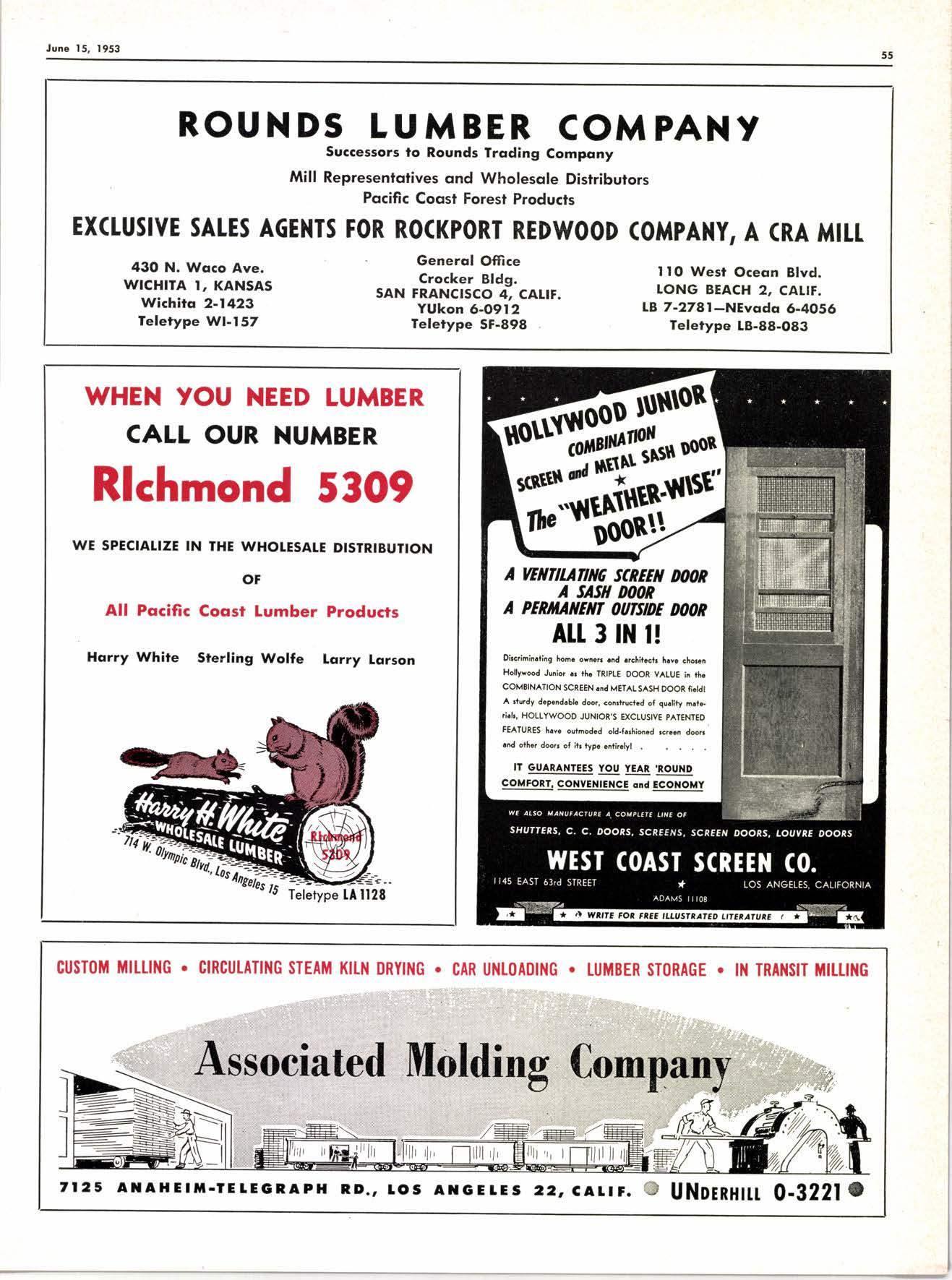
1 minute read
O7O8
732 DECATUR STREET tOS ANGELES 2I, CALIFORNIA
LAWRE]IGE- PIIITIPS LUTBER GO.
Brqdshow 24377
Canadian Log Drive in Spring
w'ith cables the alligator is as much at home on land as on water.
As modern as tomorrorv, the logging driver employs the airplane and the radio, trIando's Ftrf radio system reaches every corner of its logging areas and is used by the drive crews to report emergencies as u'ell as routine matters.
The airplane is the "eye" of the drive and the radio is the "voice." Circling overhead, the airplane's pilot is quick to spot a log jarn. He reports the jam to the nearest camp and a crew is dispatched at once to break it up.
Resembling a militarv operation, the scattered drive crews are kept in constant contact via the radio. If supplies run short, a call on the radio brings the airplane carrying the needed goods. An injured u'oodsman can be florvn to a modern hospital in a part of an hour.
Jim Bcrry
On the Wcy lo the Mill-With the comilg oI spring, one oI the most colorlul cspects oI the busiaess oI turning trees into pcper trnd insulqtion boord gets underway with the spring drive.
Fort Frances. Ontario. Canada. In this vast roadless area of forests and water, spring marks the begirtning of one of the most colorful aspects of this business of turnir.rg trees into paper and other useful products.
For after the busy winter comes the logging drive that sends millions of logs down the flooding rivers, over clams and rapids and into the big lakes where they are towed to the mills.
Here in northwestern Ontario, the l\linnesota and (lntario Paper Company's Canadian division, The Ontario-Ilinnesota Pulp and Paper Company Limited, carries on one of the largest pulpwood river drives in the province.
According to George B. Amidon, Mando's director of forest management, nearly 50,000 cords of pulp rvood rvill come down the Seine, Little Turtle and Manitou Rivers this spring.
Experienced woodsmen, working a periocl of about 90 days, depending upon wind and weather, are needed to get the logs to O-I\{'s newsprint and specialtv paper mill here.
Today's river drives use a multitude of heavy and complex machinery. The major type of equipment used is the rvinchboat and the alligator. These mechanical monsters, rveighing as much as 14 tons, tow the logs across the lakes and ba1's where tl-rey can be concentrated in large 50,000 cord boorns for the big tow by diesel powered tugs to the mills. Equipped











